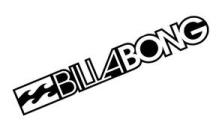 At its annual meeting, Billabong’s new CEO Neil Fiske outlined a seven-point turnaround plan, which includes rebuilding the company’s global brands and sorting emerging brands, finetuning merchandising strategies with fewer better styles, and integrating marketing strategies for each region.
At its annual meeting, Billabong’s new CEO Neil Fiske outlined a seven-point turnaround plan, which includes rebuilding the company’s global brands and sorting emerging brands, finetuning merchandising strategies with fewer better styles, and integrating marketing strategies for each region.
Fiske, who is credited with turning around Eddie Bauer, said Bilabong had become “ enormously complex and diversified.”
“We have been trying to do too many things and none of them particularly well,” said Fiske. “Building global brands takes one skill set. Running regional multi-brand retail is something totally different. And being a pure play multi-brand e-commerce business is another thing altogether. Then multiply that complexity by a regionalized organization structure with independent decision making and different operating infrastructures. As complexity grew, we lost focus. We confused the organization. As someone said to me on my first global tour of the company: “We need clarity. Are we a retail company with brands
or are we brands with retail?”
He noted that the Billabong brand is still the number one brand in specialty surf shops in both Australia and the United States. It has over 90 percent awareness and high regard in the target demographic. “I’m only 12 weeks into this role,” said Fiske, picture at left. “I’ve had the chance to spend time in our operations in Europe, the Americas and Australia. I’ve spent time in our stores and talked to our core customers, key accounts, and sales reps. I’ve looked at the consumer research. At the financials. At where we win and where we lose. And I can tell you this I am more convinced than ever of the upside ahead of us and the power of our brands.
“I’m only 12 weeks into this role,” said Fiske, picture at left. “I’ve had the chance to spend time in our operations in Europe, the Americas and Australia. I’ve spent time in our stores and talked to our core customers, key accounts, and sales reps. I’ve looked at the consumer research. At the financials. At where we win and where we lose. And I can tell you this I am more convinced than ever of the upside ahead of us and the power of our brands.
“It’s exciting to be here and see the potential right in front of us,” he continued. “It’s tangible. It’s real. But to get it, we’re going to have to make bold moves. Get back to the core. Chop the unprofitable branches off the tree. Focus on what we are best at doing. Create a brand renaissance.”
A new mantra
“This philosophy will pervade everything we do,” he said.
He noted that Billabong has several brands but “we treat them all pretty much the same. Each brand, for example, gets a comparable level of marketing regardless of where it is in its lifecycle or growth potential. RVCA is showing tremendous growth. But we’re giving it the same level of marketing as more mature brands instead of putting our foot on the gas pedal and investing to accelerate growth and market share.”
As a result, the company has sorted the portfolio into two groups “the big three” of Billabong, Element, and RVCA and smaller 'emerging brands.'
The big three and the rest
“Maximizing the power and creativity of these founders is fundamental to our brand renaissance,” Fiske said
Growing direct-to-consumer
Billabong needs to realign the organisation to the new strategy by developing a global brand structure, better merchandising, design and marketing teams and build global scale and capability in finance, supply chain, IT, and direct to consumer platforms.
Fiske finally said Billabong needed to look for further cost reductions to improve profits and fund a marketing war chest.
Problems in the Americas
He added, “Whilst the November result for the Americas was much better, the region was $9 million down in EBITDA for the first four months before significant items compared to the prior year. Collectively the rest of the group is ahead of the prior year on a comparable basis as we enter our most important trading period. I am confident though, that having withstood challenges few other brands could have, ours will flourish once they receive our full attention and appropriate investment and will in due course provide us a more appropriate return on your investment than they
currently do.”
A transcript of the full annual meeting is here.















